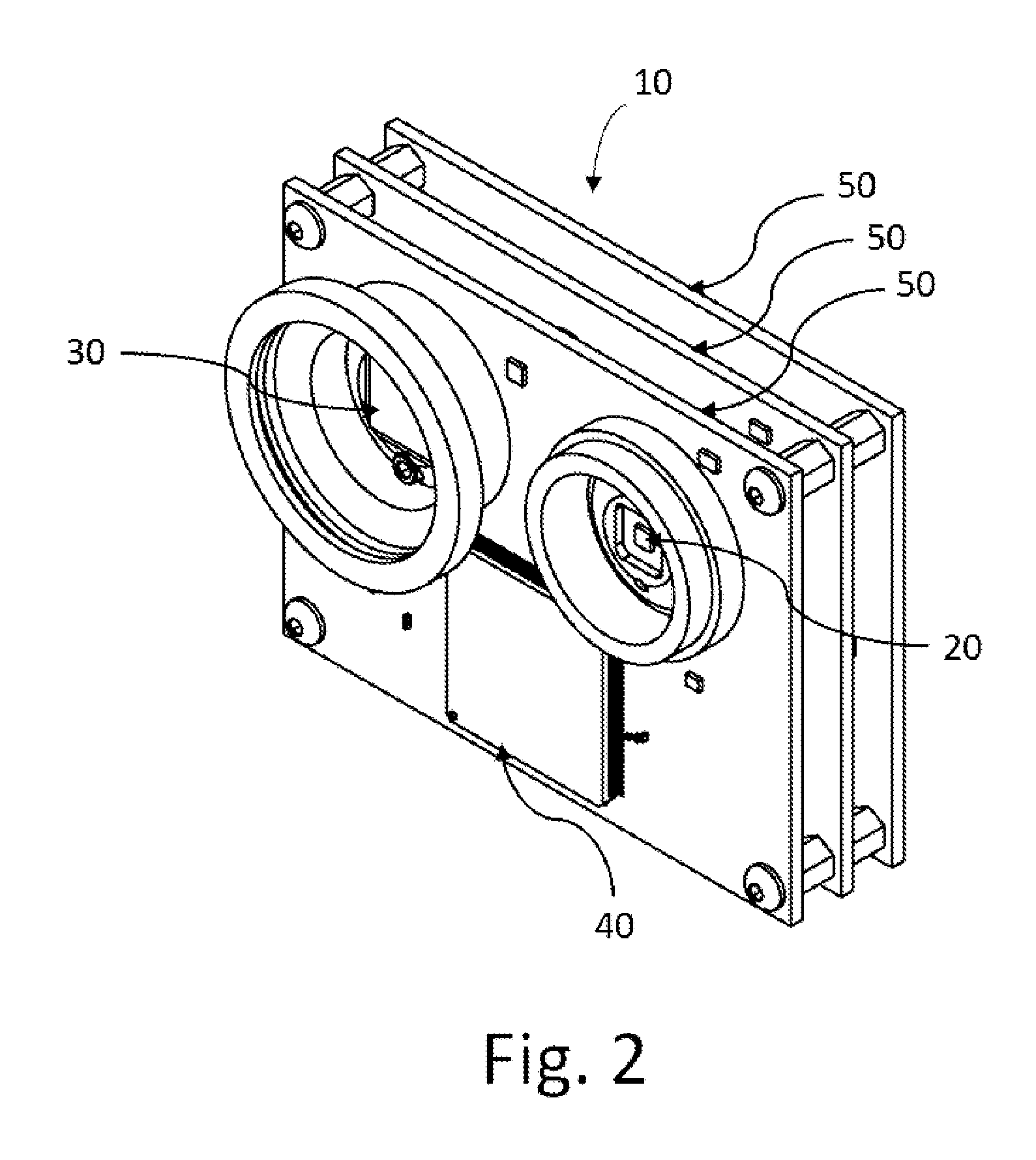Solid state optical phased array lidar and method of using same
a phased array, solid-state optical technology, applied in the direction of navigation instruments, instruments for comonautical navigation, instruments, etc., can solve the problems of expensive, different, complex phased arrays produced to date,
- Summary
- Abstract
- Description
- Claims
- Application Information
AI Technical Summary
Benefits of technology
Problems solved by technology
Method used
Image
Examples
Embodiment Construction
[0016]A lidar-based apparatus and method are used for the solid state steering of laser beams using Photonic Integrated Circuits (PICs). Integrated optic design and fabrication micro- and nanotechnologies are used for the production of chip-scale optical splitters that distribute an optical signal from a laser essentially uniformly to an array of pixels, said pixels comprising tunable optical delay lines and optical antennas. Said antennas achieve out-of-plane coupling of light.
[0017]As the delay lines of said antenna-containing pixels in said array are tuned, each antenna emits light of a specific phase to form a desired far-field radiation pattern through interference of these emissions. Said array serves the function of solid state optical phased array (OPA).
[0018]By incorporating a large number of antennas, high-resolution far-field patterns can be achieved by an OPA, supporting the radiation pattern beam forming and steering needed in solid state lidar, as well as the generatio...
PUM
 Login to View More
Login to View More Abstract
Description
Claims
Application Information
 Login to View More
Login to View More - R&D
- Intellectual Property
- Life Sciences
- Materials
- Tech Scout
- Unparalleled Data Quality
- Higher Quality Content
- 60% Fewer Hallucinations
Browse by: Latest US Patents, China's latest patents, Technical Efficacy Thesaurus, Application Domain, Technology Topic, Popular Technical Reports.
© 2025 PatSnap. All rights reserved.Legal|Privacy policy|Modern Slavery Act Transparency Statement|Sitemap|About US| Contact US: help@patsnap.com



